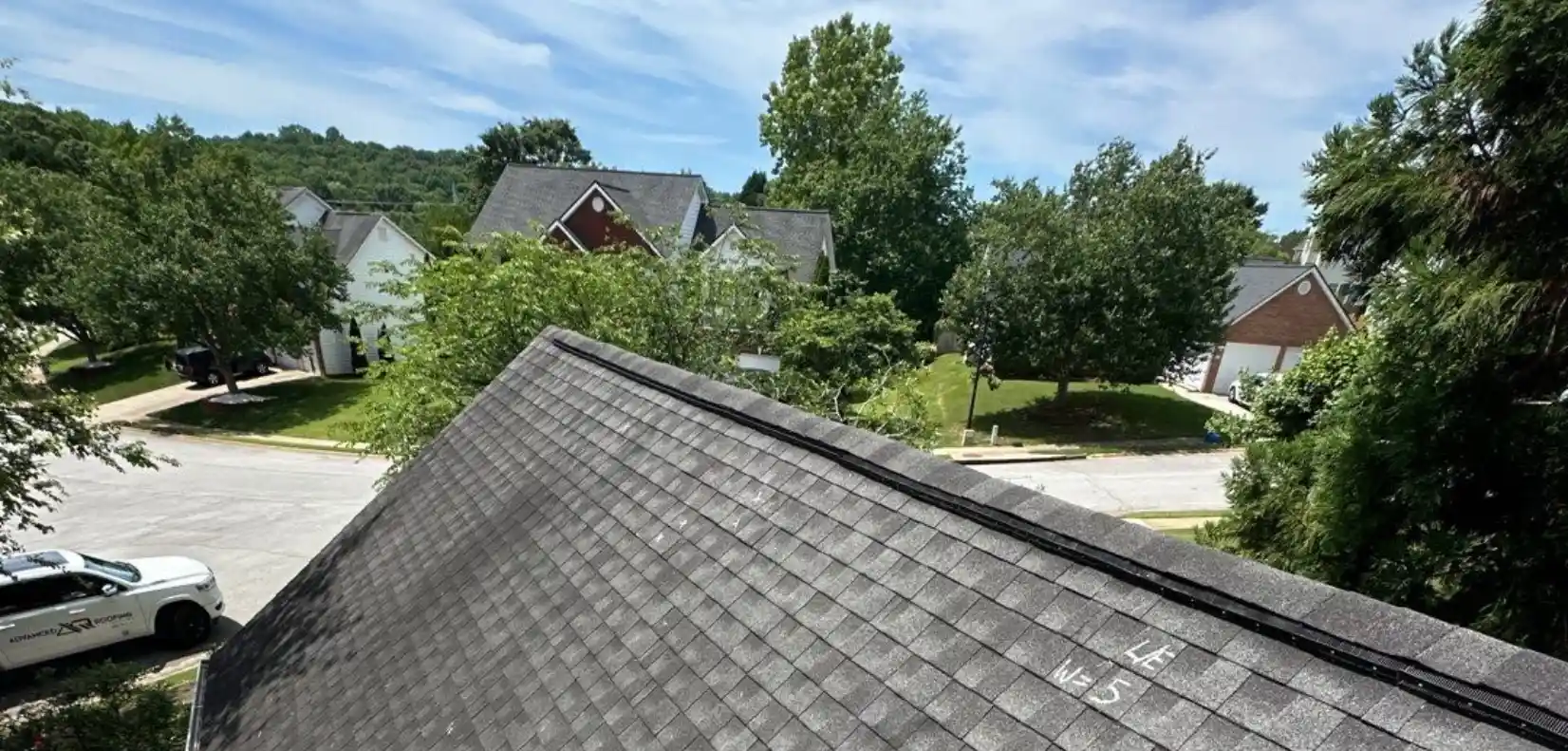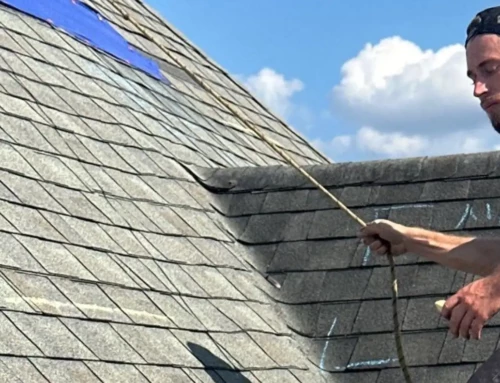How to get insurance to pay for roof replacement?
Bad weather, age, and other factors can damage your roof to the point where it needs replacing—something that may be costly. So, it makes perfect sense that you would want your insurance to pay for it. But does your insurance policy cover full roof replacement? How can you file a claim and make the most of your insurance policy?
Most insurance companies offer homeowners insurance, which covers some risks to potential roof damage, but not all. Let’s take a look at what’s covered by the average homeowner’s insurance and what you can do to get your insurance to pay for your roof replacement.
Homeowner’s Insurance
Homeowner’s insurance is the most common type of insurance that covers roof replacement. When it comes to replacing your roof, homeowners’ insurance covers some but not all replacement cost damages.
Specifically, homeowners insurance usually covers roof damage caused by sudden and accidental events, such as storm, hail, wind, fire, and falling trees. However, damage due to wear and tear, neglect, or lack of maintenance is typically not covered.
To ensure you are well protected and can cover a new roof when needed, understand what your homeowners insurance covers. Review your policy and work with a top roofing company to maximize your chances of a successful claim.
Dwelling coverage
This part of the policy covers the structure of your home, including the new roof. It typically covers damage from fire and wind, hail damage, storm damage, and other natural disasters, except those explicitly excluded like floods or earthquakes which require specific and separate requirements to be covered by insurance.
Other structures coverage
If you have structures other than your main house, such as a detached garage or shed, this coverage can apply to their roofs as well.
Homeowners insurance usually covers sudden and accidental damage. However, it does not cover roof replacement due to general wear and tear or neglect.
Other Types of Insurance
Windstorm insurance
You can add other types of insurance to fully cover new roof installation. For example, you can add windstorm insurance, which is necessary in areas prone to hurricanes, tornadoes, or other severe windstorms.
Hail insurance
Likewise, you can include repair or replacement hail insurance. In areas that witness hailstorms, this can be useful because hail can damage roofs.
Flood insurance
Standard homeowners insurance does not cover flood damage. If your roof is damaged by flooding (e.g., a tree falls on your roof during a flood), you would need a separate flood insurance policy to cover the replacement. Flood insurance is typically available through the National Flood Insurance Program (NFIP) and private insurers.
Earthquake insurance
Finally, standard policies do not cover earthquake damage. If you live in an area susceptible to earthquakes, you can add an earthquake insurance policy. This policy would cover roof damage caused by extreme seismic activity.
Steps to Get Your Insurance to Pay for Roof Replacement
The first thing to do is to check your home insurance policy and see what it covers and what your insurance company might pay. Check any exclusions and deductibles that might apply. Most homeowners’ insurance policy covers damage caused by unforeseen events such as storms, hail, or falling trees. On the other hand, wear and tear (e.g. your roof is leaking due to its old age) or lack of maintenance is usually not covered.
Get a professional roofing inspection
Consider hiring a reputable roofing company to inspect the damage before the insurance adjuster arrives. A roofing contractor can provide an actual cash value assessment and a repair estimate, which can be useful when discussing the claim with the adjuster. This way you are ensuring you are getting an independent evaluation and do not proceed without an inspection from a professional.
Document the damage
The next step is to perform a thorough roof inspection. Take clear, detailed photos and videos from different angles to capture the extent of the damage. If it’s safe, inspect the attic and ceilings for any signs of water leakage or structural issues and document those for the roof coverage as well.
Temporary repairs
To prevent further damage inspect the roof and make temporary roof repairs if possible. This might include placing a tarp over damaged areas. Keep receipts for any roofing materials or services used in temporary repairs, as these may be reimbursable.
Contact your insurance company
Contact your insurance company as soon as possible. Provide them with a detailed account of the event that caused the damage, along with the documentation you’ve gathered. Most insurers have a specific timeframe within which you must report claims, otherwise the insurance company won’t cover the damage claims. If the damage is caused by a covered peril, prompt reporting is essential.
Schedule an inspection
The insurance company will likely send an insurance agent to inspect the damage. Be there during the roof inspection to point out all areas of damage. Give the adjuster copies of your documentation and any receipts for temporary repairs. This will help ensure that the insurance company understands the full extent of the damage and what they need to replace or pay for your roof.
Submit your claim
After the adjuster’s inspection, submit your formal insurance claims, including all the documentation and repair estimates.
Review the settlement
Once the insurance company processes your claim, they will provide a settlement offer. If the offer is lower than expected or does not cover the full cost of replacement, you can negotiate. Use for your roof insurance claim the roofing contractor’s estimate and any additional documentation to support your insurance damage claim.
Appeal if necessary:
If your claim is denied or the settlement is unsatisfactory, you have the right to appeal. Request a detailed explanation of the denial and provide additional evidence or documentation if possible.
Proceed with repairs
Once you have an agreed settlement, you can hire a contractor to replace your roof.
How Being Pro-Active Helps
If you want to improve your chances of getting insurance coverage for your roof replacement, there are some things you can do to be proactive. Also, don’t hesitate to get homeowners insurance that includes the additional coverage you need to safeguard your home.
Regularly maintain and inspect your roof
Maintain and inspect your roof regularly. Document these activities to show your insurance company that you have taken the necessary steps to keep your roof in good condition. Keep records of all maintenance and repairs.
Keep detailed records
Keep a file with all documentation related to your roof, including installation details, maintenance records, inspection reports, and any previous repairs. Include receipts, photographs, and written descriptions of the work done.
Understand your insurance policy
Stay on top of your insurance policy. Check the specific terms and conditions, such as your deductible, coverage limits, and the claims process.
Document damage immediately
If your roof sustains damage, document it as soon as possible. Take clear, detailed photos and videos from multiple angles, both from the ground and, if safe, the roof. Document the interior of your home as well, especially if there are leaks or water damage.
Temporary repairs
Perform temporary repairs to prevent further damage to your home. Use tarps or other materials to cover holes or leaks. Keep receipts for any materials or services used for these temporary repairs, as your insurance company may reimburse you for these expenses.
Be clear and quick
Be clear and respond quickly to any correspondence with your insurance company throughout the claims process. Keep records of all correspondence.
Get an estimate
Get an estimate from your roofing contractor to have a solid base for the roof repair costs. These estimates can also provide a basis for negotiation with your insurance company if the initial settlement offer is lower than expected.
How to Get Insurance to Pay for Roof Replacement in Georgia?
To make sure that your roof replacement claim is approved by your insurance company, document the damage thoroughly with photos and videos, maintain detailed records of maintenance and inspections, and be clear in your communication with your insurer. Have a professional roofer inspect the damage and provide a detailed report to support your claim.
If your roof has suffered damage, Advanced Roofing and Remodeling can help! Call us for your estimate and get one step closer to your new roof.
Frequently Asked Questions
Does replacing your roof increase the value of your home?
According to industry estimates, homeowners can recoup as much as 70% of the roof replacement cost when they sell their home. That’s because a new roof can enhance your home’s curb appeal, improve energy efficiency, and reassure potential buyers about the home’s condition, reducing concerns about future repair costs.
How do you know if your roof has wind damage?
The most common signs of wind damage on your roof include missing or lifted shingles as well as curling or peeling shingles. Also, look for granules from asphalt shingles in gutters or around the base of downspouts as excessive granule loss can indicate wind damage. In addition, check for visible cracks or tears. Other signs include roof leaks and water stains on your ceiling or walls as well as debris on the roof such as branches, leaves, etc.
Does USAA cover roof damage?
It depends on the kind of roof damage. USAA homeowners insurance typically covers roof damage caused by storms, wind, hail, falling trees, etc. Coverage may include the cost to repair or replace the roof, depending on the extent of the damage and the specifics of your policy. Like most insurance policies, however, USAA doesn’t cover roof damage due to normal wear and tear, neglect, or lack of maintenance.
How can regular roof maintenance help with my insurance claim?
Regular roof maintenance shows to your insurance company that you have taken proper care of your roof, which reduces the likelihood of damage due to neglect. Keep records of all maintenance activities, inspections, and repairs. This documentation can be important when filing a claim because it shows that the damage was not due to a lack of upkeep.













